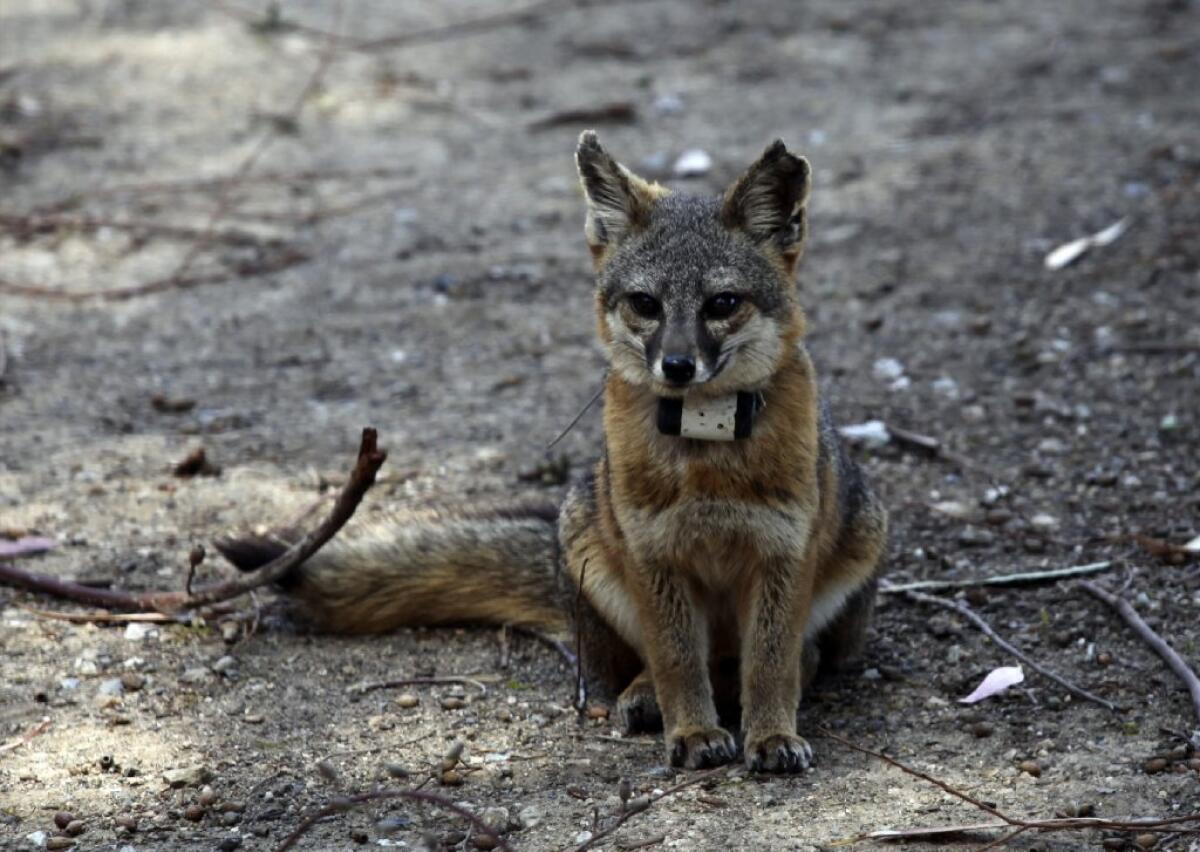Catalina Island fox gains numbers. Greatest danger now? People.

The Santa Catalina subspecies of Channel Islands fox -- found only on that island, about 22 miles from the Southern California mainland -- soon may be removed from the list of endangered species.
The U.S. Fish and Wildlife Service is considering the proposal -- as well as a separate plan that would downlist the species from endangered to threatened -- as the fox population has reached 1,700 on this small island resort destination. This rare subspecies of fox has, in fact, recovered so well that it may be nearing capacity.
Conservation biologist Julie King told the L.A. Times that the fox may have reached the point where it is “regulating itself” as the larger population competes for a limited amount of prey.
The Santa Catalina Island fox is among six subspecies of foxes that live on the Channel Islands. Each island subspecies is considered unique unto itself, and none of these foxes is found anywhere else in the world, according to the National Park Service.
Catalina foxes, which mate for life, are appealing. They’re gray in color but have reddish feet and ears and pointed noses. They are known for their small size -- about that of a house cat -- due to an evolutionary phenomenon known as insular dwarfism.
Although small, they are king on Catalina, with no natural predators. The biggest threat facing the fox now is humans.
Nearly two dozen died last year after being hit by vehicles. Nine more were found dead near roadside trash bins.
MORE: Santa Catalina Island fox population nearing full recovery
Island residents and conservationists are grappling with how best to live alongside this now-healthy population of animals.
The community of Avalon is set to receive 150 trash containers meant to defy animals, and “fox crossing” signs have been posted on roadways.
“The recovery of the island fox is one of the great success stories of ecological restoration,” says Dave Garcelon, president of the Institute for Wildlife Studies. “But with no natural predators, this little fox is king of beasts on Catalina -- and that can get it into trouble.”
For more environmental news, follow @LATenvironment on Twitter and “like” Los Angeles Times Science & Health on Facebook.








